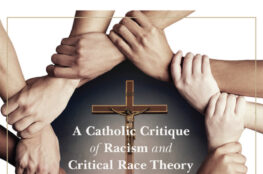Two Catholic bloggers/writers of rather different ideological temperaments — Elizabeth Stoker Bruenig (ESB) and Pascal-Emmanuel Gobry (PEG) — got into an interesting, but somewhat strange, back-and-forth last week over the proper Christian conception of property rights. (You can find a brief summary here.) I call it strange because the term “legal realism” was thrown around to mean something other than what “legal realism” has, conceptually speaking, meant for nearly a century. According to ESB, legal realism — or Christian legal realism or Augustinian legal realism or whatever — , when applied to property at least, is the view that rights are conventional and can be rearranged across time and location. Or, as PEG summarizes, legal realism, according to ESB, “is merely a descriptive theory, not a prescriptive one, and that all it does is note that different property arrangements exist at different times.” But that’s hardly a novel insight. The opening paragraphs of Gaius’ Institutes, where the great Roman jurist distinguishes the civil law from what he calls the law of nations, is predicated on the rather banal observation that different polities have different laws, though Gaius certainly believed that there were laws — the law of nations — which were universally held valid. If anything, a descriptive account of different legal rules — or that there are different legal rules — today falls under the umbrella of legal positivism. The question which legal theorists of different stripes have wrestled with for centuries is not whether legal rules are different, but whether they are right. Even when legal positivists claim to engaged in a purely descriptive enterprise, there is a not-so-subtle normative claim embedded in their thinking that the validity/invalidity of a particular legal rule or system cannot be properly adjudicated. As men embrace and discard different conceptions of justice, different legal orders will emerge. So what then is legal realism?
Though legal realism has undergone several important modifications over the past century, in short it can be summarized as a rejection of legal formalism (“The law made me do it!,” according Judge Richard Posner’s parody) in favor of an empirical approach to how judges or institutions actually decide cases. Another way of summarizing legal realism is to look to Karl Llewellyn’s famous distinction between “paper rules” — the black-letter law one finds in collections of cases and statutes — and “real rules,” i.e., the way the paper rules were actually applied to concrete cases. If the city of Grand Rapids, for instance, passed an ordinance stating, “No person may ask for money within 50 feet of a public bus stop,” a legal realist, after some perusing of case outcomes, conclude that the real rule turns out to be, “No person my ask for more than $0.25 within 15 feet of a public bus stop unless said person is washed, white, and under the age of 40.” To give a real world example from the realm of international aviation law, almost every bilateral aviation trade agreement includes the so-called nationality rule which holds that the airlines of both parties must be substantially owned and effectively controlled by the citizens of the airlines’ home state. In reality, however, the nationality rule tends to read, “The airlines of both parties must be substantially owned and effectively controlled by the citizens of the airlines’ home state only when an alternative arrangement adversely affects one party’s economic interests.” The United States routinely turns a blind eye to crossborder airline investments and mergers when the carriers in question do not pose a significant competitive threat to U.S. airlines.
Digging deeper, legal realism attempts to expose the decidedly non-legal sources of ostensibly law-based decisions. It views the enterprise of legal reasoning with suspicion, arguing that judicial decisions and other official declarations about why a law was followed one way or the other in a particular circumstance are just post hoc justifications meant to fig-leaf over a myriad of political, sociological, and ideological factors. When applied to particular judges or institutions, legal realism can — or hopes it can — shine light on how they might rule in a particular case based on past decisions and other relevant information. To a large extent, much of the legal profession — or at least the legal-academic profession — are realists now when it comes to the Supreme Court. Almost all serious ex ante and ex post analysis of the recently decided Hobby Lobby case centered on the justices themselves rather than what “clues” or “indicators” the Court’s past jurisprudence held. While legal realism was considered iconoclastic in the 1920s and 30s, it has today become engrained in the empirical study of law and the “new international law scholarship” that takes empirical evidence and rational-choice methodologies as better tools for evaluating international legal rules over more traditional doctrine-obsessed approaches.
At the end of the day, neither St. Augustine nor any Doctor of the Universal Church are legal realists, and there’s probably no such thing as “Christian legal realism” anyway. To find that a classically trained Church Father like Augustine knew the basic insights of Roman law well enough to observe that human law is variable and subject to change doesn’t get us terribly far when speaking of a just order for property rights. While I find many of PEG’s views grossly at odds with the Catholic Church’s social magisterium, that magisterium has spoken on property rights time and again. Any attempt to do an end-run around Rerum Novarum because of its ostensible “Lockean influences” by looking at what individual Church Fathers may have said on the matter of property is little different from economic liberals which toss Quadragesimo Anno under the bus because its teachings are a direct affront to the free-market ideology promoted by libertarian think-tanks. At the very least perhaps the voices in the ongoing quarrel over the forced marriage of Catholicism and liberalism can at least leave legal realism out of it.



